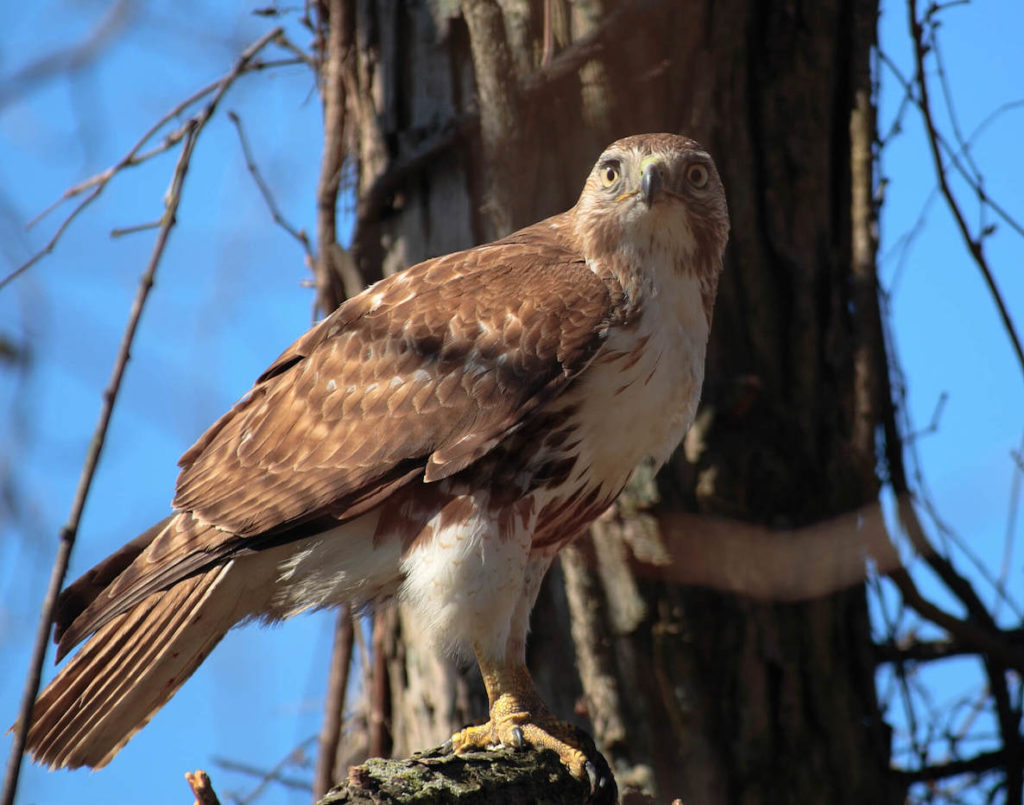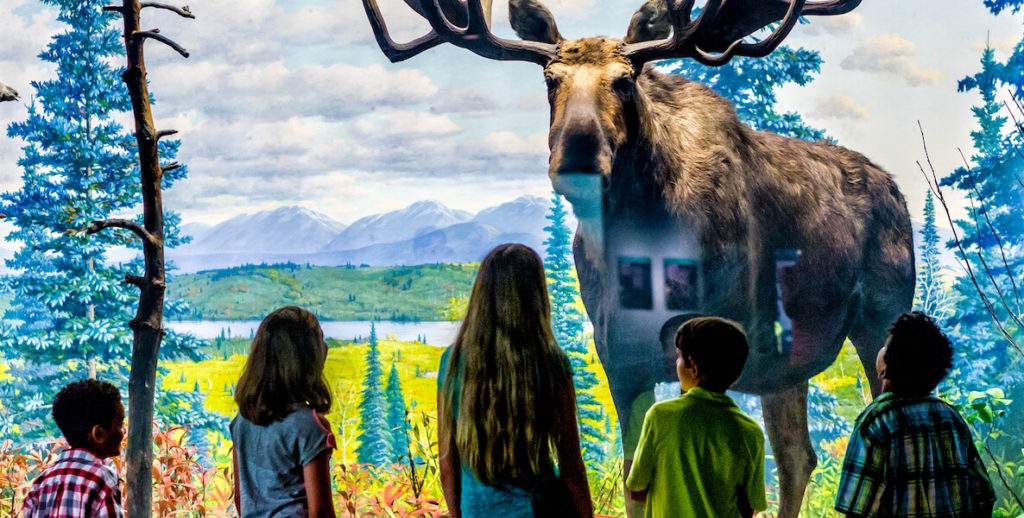Environmentalists have largely focused on as-yet-untouched, pristine landscapes and international top-down emissions reduction schemes. But cities, long ignored, are picking up more attention from environmental innovators—including those implementing the novel concept of “rewilding,” which seeks to re-introduce as much natural splendor and biodiversity back into our ecosystems as possible.
The classic example of rewilding in action is the reintroduction of the grey wolf into the Yellowstone National Park region in 1995. That led to a cascade of environmental effects: a reduction in elk grazing, renewed growth of Aspen trees, and a flourishing of beaver colonies. But from New York City to Melbourne, cities are also reintroducing wildlife and native species to control pests, clean waterways and support wildlife.
There are a number of ways Philadelphia can join them in improving our environment, and re-igniting a sense of wildness that many of us urban creatures have lost. Below, we lay out five of them.

1. REINTRODUCE PREDATORS

Like many cities, Philadelphia has a rat and mouse problem, with hordes of vermin that thrive with no remaining natural predators. City residents spend lots of time and money trying to control and manage rodents and pigeons, but one natural predator could do more to tame them than the best exterminator: the red-tailed hawk.
When reintroduced and supported with an acceptable habitat, hawks have thrived in New York City. If more public and private properties in Philadelphia encouraged hawks to roost (like the Franklin Institute does), it would go a long way toward controlling our rodent and pest population, and reducing the filth and unpleasantness associated with unwanted encounters with pigeons, mice and rats.
A vast amount of city property and housing could be made hawk-friendly, at very little cost. Ornithologists could be tasked with releasing hawks at the optimal time and place to encourage roosting. Hawks in your neighborhood? You’d be glad to have them.
2. “SEED” OUR RIVERS WITH OYSTERS
Despite improvements in the last decades as pollution-spewing industry has left our region, the rivers that flow through our city are still remarkably polluted. The Schuylkill has been named among the top 50 most polluted waterways in the country. The Delaware ranked as America’s fifth worst river for toxic discharges, and near the bottom for cancer-causing chemicals, developmental toxicants and reproductive toxicants.
As usual, nature offers a solution: the humble oyster, which along with other bivalves functions as the kidney and liver do in our bodies, filtering and sequestering pollutants. Rather than investing millions of dollars in cleanup efforts, Philly should follow the example of New York and re-seed our rivers with oyster and mussel shoals.
A single adult oyster can filter up to 50 gallons of water a day. That’s a small hot tub’s worth of water each week!
In fact, proposals from earlier this year have called for our city to do just that, including building a production-scale hatchery for freshwater mussels in Southwest Philadelphia along the Schuylkill. Not only do oysters form reefs that attract a host of other species, a single adult oyster can filter up to 50 gallons of water a day. That’s a small hot tub’s worth of water each week!
Reintroducing once-prevalent oysters into our river ways would cost very little to the taxpayer—no overtime, no strikes, and no extra pension liabilities for these busy bivalves. In New York, oyster beds have helped make its harbor the cleanest it’s been in a century. Philadelphia should follow its lead.
3. FOSTER HONEYBEE HABITATS
Bees are seen as the little flying devils that ruin picnics—but this image obscures the benefits of the “keystone” species whose positive effect on the environment is massively disproportionate to the resources they need to survive. For a thriving green space, bees are more essential than proper soil, air quality, and even rainfall thanks to their pollinating effect.
That’s what makes it so alarming that America’s population of honeybees has faced a precipitous and little-understood drop-off due to Colony Collapse Disorder (CCD), combined with rapidly diminishing habitat.
For a thriving green space, bees are more essential than proper soil, air quality, and even rainfall thanks to their pollinating effect.
Introducing a dozen or so keeper-managed colonies throughout Philadelphia’s green spaces would improve plant and flower diversity throughout the city, especially of native plants that are well-suited to our climate. More flowers and other plants will cut down on toxins in the air, soothe residents, and reduce city odors. Cleaner air, and a more vibrant environment. Bees are worth the investment.
4. GROW “MINI FORESTS” IN EMPTY LOTS 🌲
Forests soak up carbon dioxide, filter pollutants from the air, and cool their surroundings by as much as 10 degrees — something especially important in an urban climate that’s getting hotter. But it takes decades for empty land to grow into mature forest.
One Japanese botanist, Akira Miyawaki, hacked the natural process by pioneering the “mini-forest” method of disseminating plants on lots as small as one square block. The method fast-tracks forest growth by planting dense seedlings that mimic the natural composition of a mature forest—rather than waiting decades for it to happen. As a result, forests emerge and mature quicker.
The Miyawaki method can be labor-intensive and requires thought, because it involves systematically fast-tracking forest growth. But Philadelphia has the labor of hordes of prospective volunteers at the ready, as well as ministry groups, nonprofits and students. Cities from Holland to the Himalayas have planted mini-forests to great effect. Philadelphia should join them.
5. FORGET LAWNMOWERS—BRING ON THE WEEDING GOATS
Okay, goats aren’t really a native, wild species—but they’re cute, they eat everything, and they actually show up to work (no labor shortages). Why not replicate the example of Paris, France, by borrowing goats from farms and using them to control weed growth in city-run parks?
Teams of goats now mow the grass and control weeds in parts of Australia, where a group of entrepreneurs has pioneered an eco-friendly lawn mower service. They say the herbivores “can get to places where other people can’t and they’re going to turn up not hungover and complaining about wages.”
All of these ideas would improve our environment. Notably, what they will not do is cost very much money. But these projects do require vision and interest from our elected leadership—a resource that is not exactly renewable.
With an enormous amount of public land to manage (including 2,000 acres in Fairmount Park alone), the city could use herds of goats to control vegetation the natural way. As a bonus, they fertilize! Students in Philadelphia’s public and charter schools could come learn about nature and help manage Philadelphia’s new weeding GOATs.
LET’S REWILD PHILADELPHIA
We’ve outlined five affordable, creative, and fun solutions to improve Philadelphia’s ecosystems and spark a sense of the wild in our dense urban climate. All of these ideas would improve our environment. Notably, what they will not do is cost very much money. But these projects do require vision and interest from our elected leadership—a resource that is not exactly renewable.
With some civic and environmental knowledge, and participation from the private sector and public entities, we can foster wildlife, clean our waterways and improve our region’s health, from the ground up.
Who’s ready to rewild Philadelphia?
Albert Eisenberg is a co-founder of Broad + Liberty and a frequent backpacker in our national parks. Craig Yeomans is an outdoorsman and a marketing manager at Broad + Liberty. Follow them on Twitter @albydelphia and @craigyeoo.

